Pelvic Pain at Terenure Medical
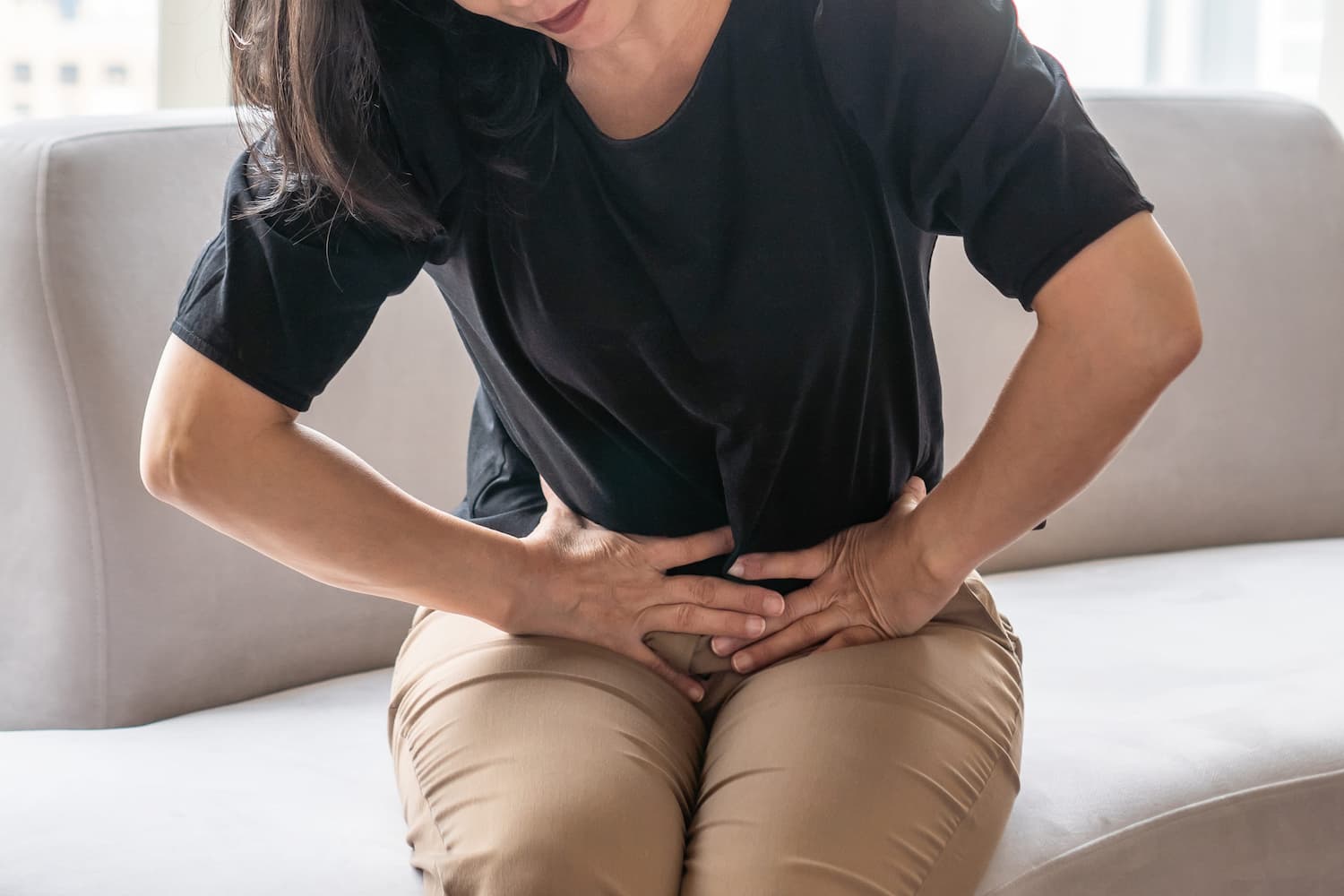
Pelvic Pain Overview
Pelvic pain is common in women and there are many different causes of pain in your pelvic area. Often the pain is in organs around the pelvis including the bowel, bladder, womb, Fallopian tubes and ovaries. Occasionally, the pain comes from your pelvic bones that are next to these organs, or from nearby muscles, nerves, blood vessels or joints. The pain can be acute (new pain) or chronic (the pain has been a problem for a long time).
Symptoms of Pelvic Pain
Symptoms vary according to where the pain is located:
- Bowel. Pain may occur in the abdomen and usually comes and goes. The pain often eases when you pass stools or wind. Other symptoms might include bloating and swelling of your abdomen, diarrhoea or constipation. Occasionally there are bladder symptoms as well.
- Bladder. Mild discomfort, pressure, tenderness or intense pain in your bladder and pelvic area is not uncommon and these symptoms can persist for weeks. Symptoms can often fluctuate. You may also need to urinate more frequently than usual or have pain when urinating.
- Pain during sex. Pain may be felt in the genital or pelvic area during or after vaginal sex. This pain may be felt on the surface of the genital region or deep in the pelvis. Where the pain is deep in the pelvis, this could be caused by the genital organs themselves but may also be caused by other factors including endometriosis, ovarian cysts, pelvic inflammatory disease and sexually transmitted infections.
If you are experiencing any of the symptoms of pelvic pain, you should consult your GP.
Causes of Pelvic Pain in Women
There are various causes of pelvic pain, including:
- Ovulation. Some women develop a sharp pain when an egg is released, and this pain may be on a different side each month. It only lasts a few hours but may be severe.
- Period pains. Most women have some pain during their periods and, while it is often mild, for about 10% of women the pain can be severe.
- Pelvic inflammatory disease (PID). PID is an infection of your womb caused usually by chlamydia or gonorrhoea. Symptoms include pain in your lower abdomen or pelvis, fever, abnormal vaginal bleeding and a vaginal discharge.
- Bursting or twisting of ovarian cyst. An ovarian cyst is a fluid-filled sac which develops in an ovary. While most ovarian cysts are non-cancerous and cause no symptoms, pain may occur when they burst or twist. Certain types of ovarian cysts tend to go away on their own.
- Degenerative changes in a fibroid. Fibroids are non-cancerous growths which can occur in your womb. While they are common and usually cause no symptoms, sometimes they can cause heavy periods, abdominal swelling and urinary problems. On rare occasions, the fibroid can shrink which can be very painful.
- Endometriosis. Endometriosis is a condition where tissue similar to the lining of the womb grow in other places, such as the ovaries and Fallopian tubes. It causes pain around the time of your period. It is most common in women in their thirties and in women who are having trouble getting pregnant. It may also cause pain when you have sex.
- Chronic pelvic pain. If you have pain for at least six months it is known as chronic pelvic pain, and this can occur in arund 1 in 6 women. Sometimes there is no obvious cause and sometimes it is due to one of the other causes detailed here.
- Appendicitis. This occurs when your appendix is inflamed and is relatively common. Symptoms usually include abdominal pain and vomiting that gradually gets worse within a day. An operation to remove the appendix is usually done before it bursts.
- Irritable bowel syndrome (IBS). IBS is a common disorder with unknown cause. Symptoms come and go and can include abdominal pain, bloating, diarrhoea, or constipation.
- Urine infection. Women commonly get infections of the urinary tract in the bladder. It is usually treated with antibiotics if the symptoms don’t go away by themself.
- Post surgery adhesions. As your body heals after abdominal or pelvic surgery, the tissue may accidentally stick together and this may cause pain.
- Strangulated hernia. Where there is a weakness in the wall of the abdomen, some of the contents within the abdomen can bulge under the skin. This is a hernia and there is a small chance that the hernia might strangulate, causing the blood supply to the portion of intestine in the hernia to be cut off. This can lead to severe pain and damage to the affected part of the intestines in the hernia.
- Muscle and bone problems. Pain can be caused by problems with your lower back, bones in your pelvis and joints such as your hips.
- Sexually transmitted infections (STI). An STI is an infection that passed from person to person during vaginal, oral, or anal sex. There are many different STIs and some may just affect the genital areas whereas others affect different parts of the body. Typical symptoms include vaginal discharge, abnormal vaginal bleeding, a sore or ulcer, rash, or lump that appears around the vagina, vulva or anus, pain when you have sex, or pain when you urinate.
If you are experiencing any of the symptoms of pelvic pain, you should consult your GP.
Causes of Pelvic Pain in Pregnancy
If you are pregnant, pelvic pain can be caused for a variety of reasons:
- Miscarriage. Most miscarriages occur before the 13th week of pregnancy. Symptoms of miscarriage usually include vaginal bleeding, lower abdominal or pelvic cramps and passing some tissue from the vagina (this often looks like a blood clot).
- Ectopic pregnancy. When a pregnancy tries to develop outside the womb, this is called an ectopic pregnancy. This happens in around 1% of all pregnancies. Symptoms commonly include pain on one side of the lower abdomen or pelvis which may develop sharply or may get slowly worse over a few days. Pain may be severe and darker coloured vaginal bleeding is also common.
- Bursting of a corpus luteum cyst. A corpus luteum makes hormones that help keep you pregnant, until other organs such as the placenta take over. A corpus luteum cyst is a harmless, fluid-filled mass that forms in your ovaries. It usually clears up without treatment but occasionally it can become swollen and burst causing sharp pain on one side of your pelvis.
- Premature labour. Premature labour is labour that starts before 37 weeks. Signs of labour occurring before 37 weeks include ‘water breaking’ or fluid leaking from your vagina, cramps that feel like period pain, unusual backache, contractions that get stronger and more frequent, sudden increased pressure in your pelvis, bleeding from your vagina, loss of your mucous plug and sticky mucus discharge from your vagina.
- Placental abruption. Very rarely the placenta detaches from the wall of the womb. If this occurs before 24 weeks of pregnancy this is called a miscarriage. After 24 weeks this is called an abruption and if it happens it is an emergency because the baby relies on the placenta for food and oxygen. If it occurs, the Obstetrician will try to deliver the baby quickly, usually by emergency caesarean section.
If you are pregnant and are experiencing pelvic pain, you should consult your doctor immediately or attend the emergency department.
Diagnosing and Treating Pelvic Pain
Your doctor will conduct a physical examination of you and ask about your symptoms. This may then lead to further tests, including:
- Urine sample to test for a urine infection.
- Swab tests to check for infections, including STIs.
- Routine ultrasound to diagnose problems such as ovarian cysts.
- Urgent ultrasound if an ectopic pregnancy or miscarriage is suspected.
- Laparoscopy (a small telescope put through a small cut in your belly button to allow the doctor to see inside your pelvis) when a cause for persistent pain has not been found.
- Gastroscopy or Endoscopy (a flexible telescopes to look inside your bowel) if a bowel cause for your pain is suspected.
Treatment for pelvic pain will depend on the cause.
Pelvic Inflammatory Disease (PID) Overview
PID is an internal infection which has usually passed into the womb and its surrounding organs from the vagina or cervix. Usually, the infection is passed on through sex and most commonly develops in women aged 15 - 24 years.
Symptoms
Most commonly, mild to severe pain in the lower abdomen is experienced. Other symptoms can include abnormal vaginal bleeding (periods that are heavier than usual, or bleeding between periods, or bleeding after sex), pain during sex, abnormal vaginal discharge, fever and lower back pain. Symptoms can develop quickly and you can become quite ill over a few days. However, symptoms are sometimes mild and develop slowly or you may have no symptoms and you do not know that you are infected. You are still at risk of complications even if you have no symptoms.
Causes
The most common cause of PID is from a STI, usually Chlamydia or gonorrhoea. When the bacteria travel into the womb you may become unwell. Some cases of PID are not due to an STI. The vagina normally contains many different bacteria and occasionally these bacteria can cause PID. The risk of getting PID goes up if you have recently changed sexual partner, have previously had a PID or STI, have had a recent abortion or a recent womb operation, or have had an intrauterine contraceptive device (coil) or intrauterine system inserted recently.
Using a condom during sex helps to protect you from STIs. The risk of infection increases with the number of changes of sexual partner.
Diagnosis
A swab of discharge is usually taken from the neck of your womb to test for any bacteria. A swab from the urethra and blood and urine tests may also be taken to look for infecting bacteria or the effects of infection. If bacteria are not found, a blood test may show inflammation or infection, or an ultrasound may be able to show inflamed Fallopian tubes. Your doctor may order a laparoscopy to look inside your abdomen, womb and Fallopian tubes, though this is not routinely needed to diagnose PID. A pregnancy test is also usually done if you are suspected of having PID because an ectopic pregnancy can sometimes be confused with PID, as some of the symptoms are similar.
Any sexual partner you have had within the last six months should be tested for infection.
Complications
If PID is treated early, complications do not usually develop. However, possible complications can include:
- Difficulty becoming pregnant, as PID can cause scarring or damage to the Fallopian tubes.
- An increased risk of an ectopic pregnancy if you become pregnant.
- Persistent pain, including pain during sex.
- Pregnancy complications such as miscarriage, premature birth and stillbirth.
- Reactive arthritis (rarely).
- An abscess can develop next to the womb if PID is severe.
Treatment
PID is usually treated with a course of antibiotics for at least two weeks. Tell your doctor if you are (or may be) pregnant as this may affect the choice of antibiotic. If you have a very high temperature (over 38°C) or if there are signs of an abscess, you may need to be in hospital for treatment. Occasionally, an operation is needed, for example, to drain an abscess if one develops.
You should not have sex until both you and your sexual partner have finished treatment.
Recurrence
If you have had a PID, you have around a 20% chance of recurrence, often within two years. This may be because your sexual partner was not treated and you were reinfected, or you did not take the antibiotics as prescribed, or you changed your sexual partner and did not use condoms. In addition, you may be more prone to infection if your womb or Fallopian tubes have been damaged by a previous episode of PID.
The risk of complications such as infertility or persistent pelvic pain is increased with repeated episodes of PID.
Pelvic Organ Prolapse
Pelvic organ prolapse occurs when the support structures in the organs inside a woman’s pelvis are weakened. This causes one or more of the organs, including the womb, bladder, and rectum, to drop down or ‘prolapse’ into the vagina. Occasionally, the level of prolapse can be so much that it causes the walls of the vagina or uterus (or both) to protrude outside the opening of the vagina. It is estimated that around half of all women who have had children have some degree of prolapse, but most do not consult their doctor for this.
Different types of prolapse can occur depending on which organs have dropped down into the vagina. Prolapse can affect the front part of the pelvis, including the urethra (the tube along which urine passes from the bladder to the outside), the bladder, or both (this is the most common type of pelvic organ prolapse). Prolapse can affect the rear part of the pelvis, including the rectum, womb, vaginal vault (after a hysterectomy), or the space between the rectum and the womb.
Symptoms
While some women have no symptoms, most women will have some symptoms, including:
- A lump or protrusion in your vagina.
- Pain in your vagina, back or abdomen.
- Discharge from your vagina, which may be blood-stained or smelly.
- Discomfort during sex.
Symptoms are often worse after standing up for long periods and then improve after lying down. Other symptoms will depend on the type of prolapse that you have and can include:
- Urinary symptoms. These may occur if your prolapse affects the front part of your pelvis (urethra and bladder) and may include:
- Frequent need to urinate.
- Leaking of urine when you cough, sneeze, laugh or strain.
- Urine flow that stops and starts.
- A feeling that your bladder has not emptied fully, and you need to urinate again soon afterwards.
- The need to change position whilst sitting on the toilet or the need to use your finger to push back the prolapse to enable you to urinate.
Complications may also occur, including urine infections, incontinence, not being able to urinate at all (which may need treatment by inserting a catheter into your bladder to drain the urine).
- Bowel symptoms. These may occur if your prolapse affects your rectum. Symptoms can include difficulty passing stools or straining to pass stools, feeling a sudden urge to pass stools, feeling that your bowels have not emptied fully, incontinence, wind, feeling an obstruction whilst you are passing stools, or the need to push on, or around, your vagina or perineum to enable stools to pass.
- Sexual difficulties. It may be difficult or uncomfortable to have sex, and the prolapse can affect arousal. Some women find the prolapse embarrassing and avoid sex.
- Cervix or skin ulceration. If the prolapse is large enough to protrude from your vagina, this can lead to ulceration of your cervix or skin. It can sometimes cause bleeding and infection.
You should consult your GP if you experience any of these symptoms.
Causes
It is believed that various things may increase the risk of developing pelvic organ prolapse, though it is not known for sure. They include:
- Childbirth, particularly a difficult, prolonged labour, a forceps or suction delivery, or if a woman gives birth to a large baby.
- Increasing age, as the lack of oestrogen hormone after menopause affects the pelvic floor muscles and structures around the vagina.
- Increased pressure inside the abdomen which puts strain on the supporting ligaments and muscles. This can also occur in women who are overweight, who have chronic lung problems, and who frequently strain due to constipation or who do heavy lifting.
- Gynaecological surgery which may weaken the ligaments, pelvic floor muscles and other support structures for the pelvic organs. However, with the advent of keyhole (laparoscopic) surgery this is becoming less of a problem.
- On very rare occasions, pelvic organ prolapse can occur because of a deficiency of collagen that someone is born with.
Diagnosis
Your doctor will normally perform an examination of your vagina to diagnose pelvic organ prolapse. Your doctor will usually insert an instrument called a speculum into your vagina allowing them to look for prolapse. These examinations are not usually painful. If you have bowel symptoms, your doctor may suggest that they examine your rectum.
If you have any urinary symptoms a urine test may be performed. A blood test may also be ordered to check your kidney function. Occasionally further tests, such as an ultrasound scan, are used.
Treatment
Treatment for pelvic organ prolapse is aimed to ensure that you are pain-free, able to pass urine and stools normally, able to have sex comfortably, do not have complications such as urine infections or ulceration, are able to have children if you desire. While some women may require surgery for their prolapse, non-surgical methods will always be tried first, including:
- Watchful waiting. If you have few symptoms and these do not worsen over time, your doctor may advise you to wait to see how your symptoms develop. During this period of watchful waiting there are things you can do to help prevent the prolapse from worsening including losing weight, treating any constipation that you may be experiencing, quitting smoking, and avoiding straining or heavy lifting.
- Pelvic floor exercises. Whether you have symptoms or not pelvic floor exercises are recommended to prevent mild prolapse from worsening and to lessen any backache and abdominal discomfort you may be experiencing. Your GP can refer you to a physiotherapist to provide expert support to you.
- A vaginal pessary. These are usually ring-shaped and made of silicone or plastic and inserted into your vagina. It is left in place (should be changed every 6-12 months) and helps to lift up the walls of your vagina and any prolapse of your womb. It is easily inserted, and many GPs can insert them. It can be used if you are not able, do not wish to, or are waiting for surgery, and are still of child-bearing age. A vaginal pessary does not prevent you from having sex as it can either be left in during sex or removed before sex and replaced afterwards. Some people experience side-effects including pain or difficulty passing urine, or ulceration of the skin inside your vagina.
- Vaginal oestrogen creams. Your doctor may suggest that you apply some oestrogen cream to your vagina for 4-6 weeks if the prolapse is mild to help with any discomfort that you may be experiencing.
- Surgery for pelvic organ prolapse. Various types of surgery are performed to permanently treat pelvic organ prolapse, depending on the type of prolapse that you have. These include:
- A vaginal repair operation to reinforce and tighten the walls of your vagina. This is usually done through your vagina and so you do not need a cut in your abdomen.
- A hysterectomy is a common treatment for uterine prolapse.
- An operation to lift up your uterus or vagina.
- An operation to seal up the vagina. This is rarely done as it is not possible to have sex after this operation.
Full recovery can take up to 6-8 weeks after surgery. You should avoid heavy lifting and sexual intercourse during this time. There is a chance that a prolapse can return after surgery. This occurs in about 30% of women.
There has been negative media regarding surgery for pelvic organ prolapse in recent years. If you are considering surgery for prolapse you should discuss this with your GP and surgeon who can explain the risks and benefits to you.
Pelvic organ prolapse will usually, though not always, become gradually worse, if left untreated. The outlook is better for younger women who are of a normal weight and are in good health.
Practices that also provide Pelvic Pain

Applewood Medical
Applewood Village, Swords, Co. Dublin
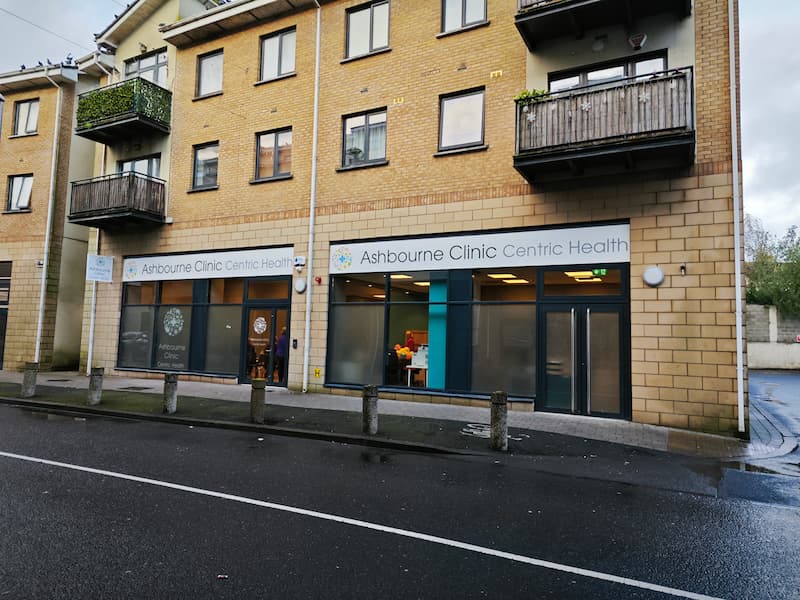
Ashbourne Clinic
62 Declan’s Street, Killegland Walk, Ashbourne, A84EP40

Ashford Clinic
Unit 1 Mount Usher Court , Ashford Co Wicklow

Athy Medical
Carlow Road , Athy, R14 X672 , Co Kildare

Ballycane Surgery
Unit 1 & 2, Hazelmere Shopping Centre, Naas, Co. Kildare, W91 AW7D

Ballyowen Medical
Ballyowen Lane, Lucan, Co Dublin
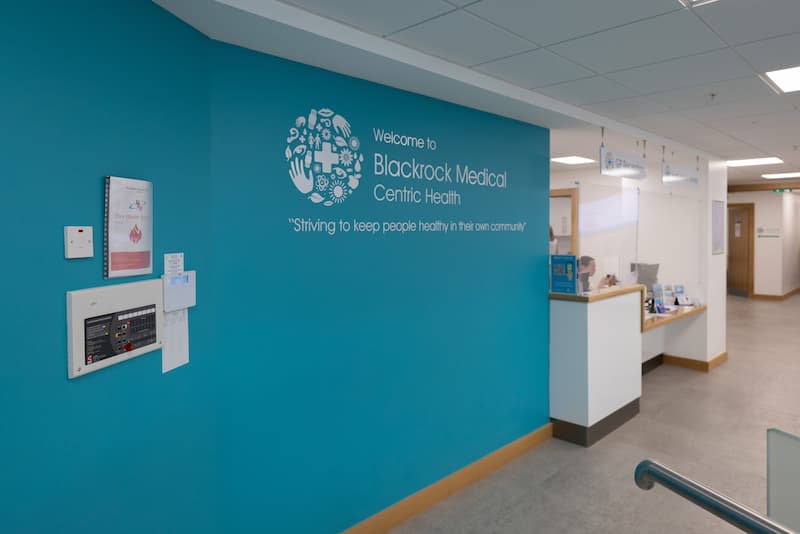
Blackrock Medical
Frascati Centre, Blackrock, Co Dublin, A94 H6V9

Blessington Medical
McGreals Primary Care Centre, Blessington Business Park, Blessington, Co. Wicklow
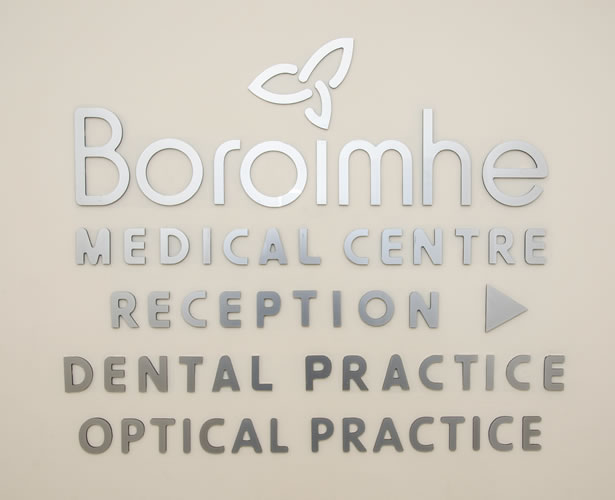
Boroimhe Medical
Forrest Road, Swords, Co. Dublin

Bryanstown Medical
Dublin Road, Martello Village, Drogheda, Co Louth

Carlow Medical
Shamrock Plaza, Green Lane, Carlow, Co Carlow

Castleknock Village Medical
The Square, Castleknock, D15 P3VX

Celbridge Medical
Celbridge Primary Care Centre, Maynooth Road, Celbridge, Co. Kildare, W23 YK24

Churchtown Medical
96 -98 Churchtown Road Upper, Churchtown, Co. Dublin, D14 EW68
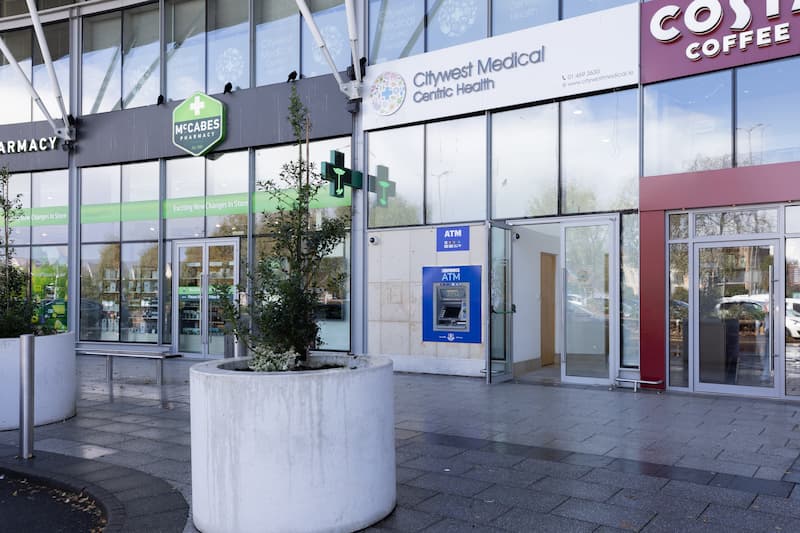
Citywest Medical
Unit 5, Citywest Shopping Centre, Citywest, Dublin 24 D24KOYT
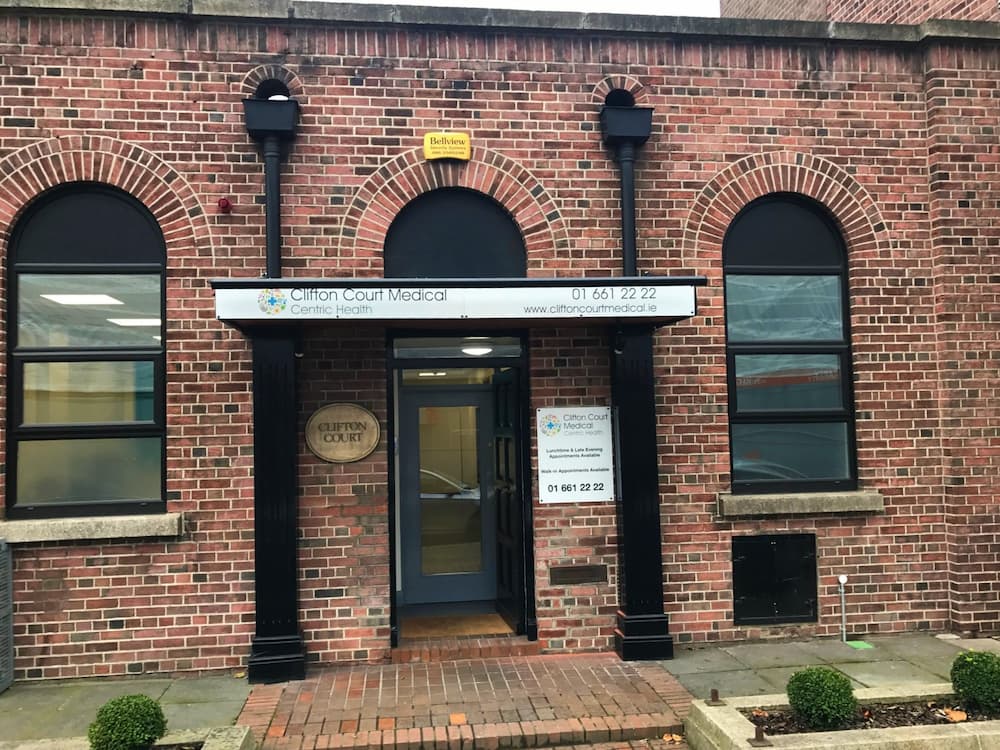
Clifton Court Medical
Clifton Court, Fitzwilliam Street Lower, Dublin 2, D02 V279

Cobh Medical
Cobh Primary Care Centre, GP Surgery, Ticknock, Cobh P24 V621

Corbally Medical
Corbally Medical , Corbally Rd, Limerick, V94 WFX9

Cottage Surgery
New Rd, Bailieborough, Co. Cavan, A82 D2XO

Desmond Medical
Station Road, Gortboy, Newcastle West, Co. Limerick, V42RD76

Dolmen Family Medical Practice
Shamrock Plaza, Green Lane, Carlow, R93 YF70

Donaghmede Medical
Donaghmede Shopping Centre, Grange Road, Dublin 13

Doonmoon Medical
Doonmoon Medical Centre, St Nessan's Road, Dooradoyle, Limerick V94 FCD1

Dundrum Medical
Dundrum Medical Centre, Level 4, Dundrum Town Centre, Sandyford Road, Dundrum, Dublin 16, D16 XC91
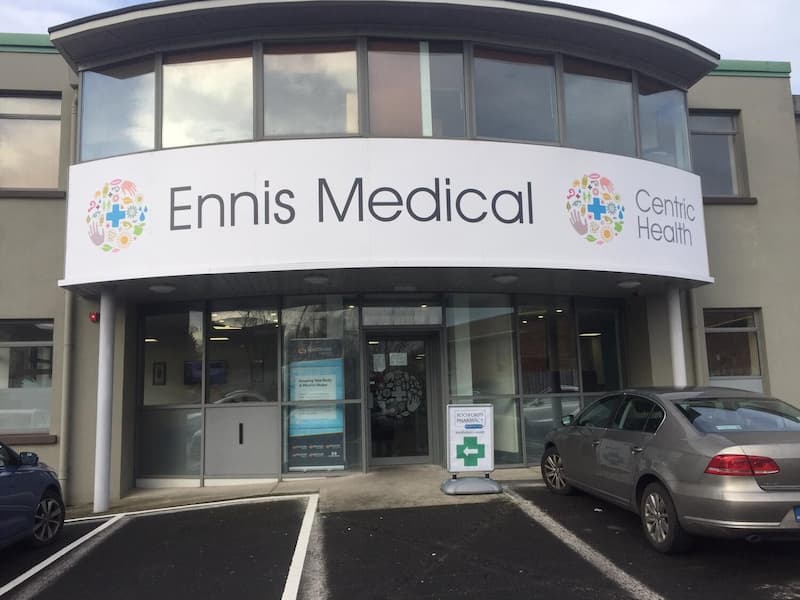
Ennis Medical
Francis Street, Ennis, Co Clare V95 KC3H,

Ennis Road Medical
Ennis Road, Limerick

Fairgate Medical
No.6 Lower Ground Floor, Boyne Shopping Centre, Drogheda. A92W990

Finglas Medical
45 - 47 Main Street, Finglas, Dublin 11

Glasnevin Family Practice
11 Finglas Rd, Harts Corner, Glasnevin, Dublin 11, D11PA00

Grafton Medical
Grafton Buildings, 34 Grafton Street, Dublin 2, D02 XY06

Headfort Family Practice
Primary Care Centre, Navan Road , Kells, Co. Meath, A82 H3C7
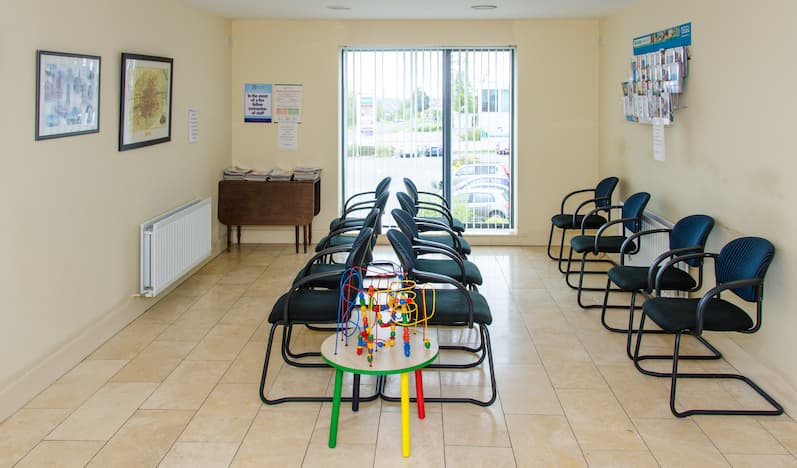
Hilltop Medical
Rathmullan Rd., Rathmullan, Drogheda, A92 KVP8, Co. Louth

Johnstown Medical
Johnstown Road, Dun Laoghaire, Co.Dublin , A96W248

Kilcock Medical
The Bawnogues, Kilcock, Co. Kildare, , W23 XY89

Kilcullen Medical
The Medical Centre, Main Street, Kilcullen, Co Kildare, R56 NV26

Killarney GP
6B Scott St, East Avenue Road, Killarney, Co. Kerry.

Knocknacarra Medical
Clybaun Road, Knocknacarra, Galway, H91 TKF3

Manor Mills Medical
Manor Mills Shopping Centre, Mill Street, Maynooth, Co Kildare W23 V5X5

Maretimo Medical
The Promenade, Upper Salthill Road, Salthill, Co Galway, H91 EW68

Meadow Springs Medical
41a Meadow Springs, Clareview, Limerick, V94 RPA8

Medina Medical
Mill Road, Fermoy, Co.Cork, P61 NN79

Navan Road Medical
Primary Care Centre, Navan Road, Dublin 7, D07 K229

Newbridge Family Practice
Orchard House, Moorefield Road, Newbridge, Co. Kildare, W12Y884,

Newbridge Medical
Station Road, Newbridge, Co. Kildare,

Northgate Surgery
226 Pearse Park, Drogheda, Co Louth, A92 E088
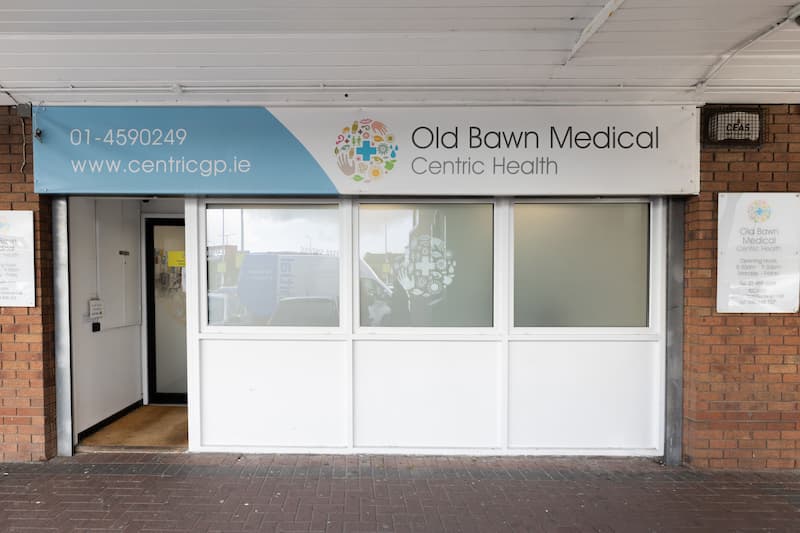
Old Bawn Medical
Unit 2-3 Old Bawn Shopping Centre, Tallaght, D24 HXW3,
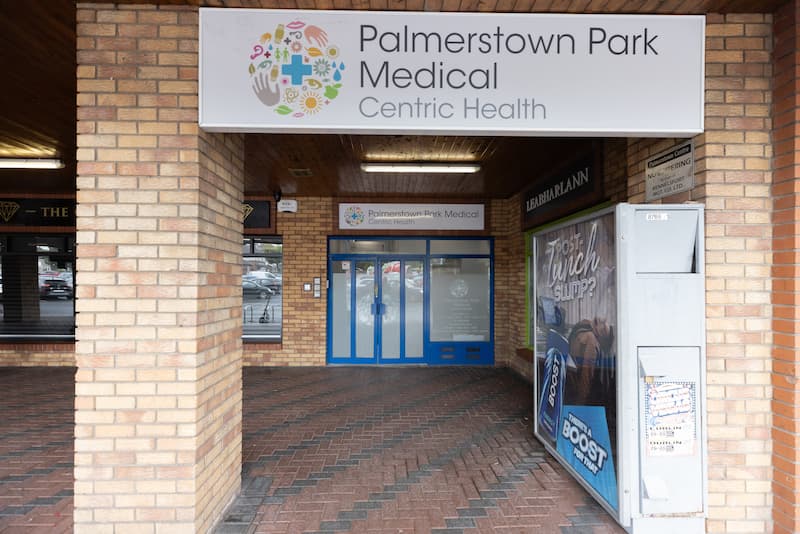
Palmerstown Park Medical
Palmerstown Park Medical, Unit 18 First floor Palmerstown Shopping Centre, Palmerstown Dublin 20, D20HP44

Raheen Medical
1 Greaney Close, Raheen, Limerick, V94 V2TT

Raheny Medical
1st Floor, Hilltop Shopping Centre, Station Road, Raheny, Dublin 5, D05 F625

Ranelagh Medical
22-26 Sandford Rd, Ranelagh, Dublin 6, D06 KF84

Roshill Medical
Unit 11, Level 1, Briarhill Shopping Centre, Ballybrit, Galway H915W40

Salem Medical
Wicklow Primary Health Centre, Knockrobin, Co. Wicklow, A67 P762

Sandyford Medical
Unit C7, The Plaza, Beacon South Quarter, Sandyford, Dublin 18, D18 TY79

Sheehan Medical
Unit 301, 3rd Floor, Dun Laoghaire Shopping Centre, Marine Road, Dun Laoghaire, A96 DD74

Southern Cross Medical
Southern Cross Road, Bray, Co. Wicklow, A98 V4K7,

St James’s Gate Medical
114 - 116 James's street, Dublin 8, D08KXN8

Sutton Medical
St. Margaret's, 1 Greenfield Road, , Sutton Dublin 13, D13 H9H6,

Tuskar Medical
St Martins Road, Rosslare Harbour, Wexford Y35 RX62

Terenure Medical
84A Terenure Road East, Terenure, Dublin 6, DA6 W5A2

The Park Clinic
The Park, Cabinteely, Dublin 18, D18 C984

The Plaza Clinic
Main Street, Swords, Co Dublin

The Square Medical
1st Floor Elgee Building, Market Square, Dundalk, Co. Louth. A91 YR9X

Tobin Healthcare Centre
Spencer Street, Castlebar, Co Mayo, F23 WV78

Trim Medical
Trim Primary Care Centre, Longwood Road, Trim, C15 PHP1, Co. Meath

Tyndall Clinic
Unit 9B, Barrowvalley Business Park, Sleaty Road, Graiguecullen, Carlow R93 N6W8

Village Medical Centre
Unit 6 Village Shopping Centre, Watery Lane, Clondalkin, D22V2H9

Wexford Medical
2-3 Redmond Square, Wexford, Y35 PF63,

Wherlands Lane Medical
Blackpool, Cork City, T23 APR3,

Willow Park Medical Centre
72 Willow Park Crescent, Glasnevin, Dublin 11, D11 X981

Windmill Court Medical
Windmill Court Medical, Lower Gerald Griffin Street, Limerick V94 CX6H